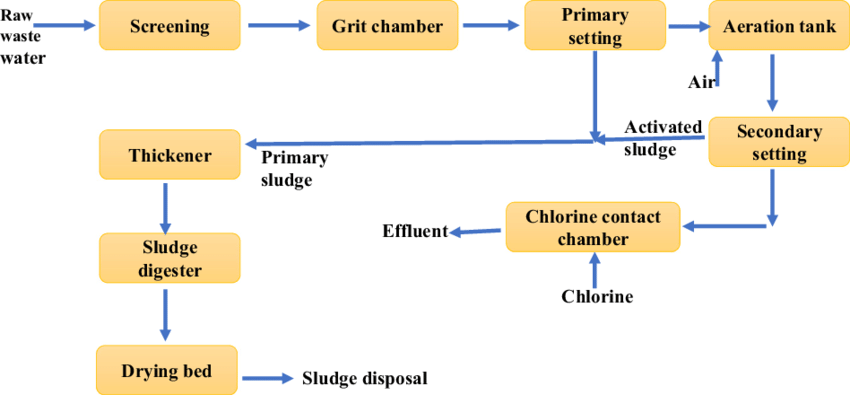More About Reclaim Waste
More About Reclaim Waste
Blog Article
The Facts About Reclaim Waste Revealed
Table of ContentsThe Main Principles Of Reclaim Waste Not known Facts About Reclaim WasteSome Known Facts About Reclaim Waste.The 7-Minute Rule for Reclaim WasteA Biased View of Reclaim Waste
Discover the kinds, events, and kinds of liquid waste. Domestic sewage waste describes the waste and products from a domestic septic tank. This sort of waste is produced by humans in homes, colleges, and other structures. This only includes sewage-disposal tanks that have a drainpipe area. The appropriate monitoring and disposal of residential sewage waste require liquid waste to be moved to a sewer therapy plant where the proper approaches and equipment are applied to purify and deal with waste.
Business waste typically includes prospective risks, such as combustible materials or a blend of liquid and solid waste items, and requires a more sophisticated and thorough disposal procedure. The disposal of business waste typically involves the filtration of waste before transportation to guarantee secure and appropriate disposal. Hazardous waste is produced from results and overflow of commercial processes and manufacturing.
This sort of waste can not utilize the same sewer administration transportation or processes as septic or industrial liquids. The industrial waste management procedure requires the assessment and testing of liquid waste prior to it undergoes the disposal process (liquid waste disposal melbourne). Overflow waste is the liquid waste that originates from runoff and excess stormwater in extremely populated areas or cities
Runoff waste can trigger contamination and flooding if not handled correctly. Learn more about sewage system cleansing and waste monitoring. Guaranteeing appropriate waste management can stop disasters and lower environmental harm. Both individuals in residential settings and professionals in commercial or production sectors can gain from comprehending the processes and policies of fluid waste monitoring.
Little Known Facts About Reclaim Waste.
Call PROS Providers today to find out concerning our waste management and disposal services and the appropriate means to care for the fluid waste you produce.
(https://www.imdb.com/user/ur191403836/?ref_=nv_usr_prof_2)This supposed 'wastewater' is not just a crucial resource yet, after therapy, will be released to our land, rivers or the sea. Used water from commodes, showers, bathrooms, kitchen sinks, laundries and commercial procedures is recognized as wastewater.

water made use of to cool down equipment or clean plant and devices). Stormwater, a form of wastewater, is drainage that moves from agricultural and city areas such as roofs, parks, gardens, roads, courses and gutters right into stormwater drains, after rainfall. Stormwater moves untreated directly to neighborhood creeks or rivers, at some point reaching the sea.
The Best Strategy To Use For Reclaim Waste
In Queensland, a lot of wastewater is treated at sewage therapy plants. Wastewater is delivered from residential or commercial sites with a system of sewers and pump terminals, recognized as sewage reticulation, to a sewage therapy plant.
The Division of Natural Resources recommends city governments concerning handling, operating and maintaining sewage systems and treatment plants. In unsewered areas, local governments might need homeowners to set up individual or house sewage treatment systems to treat residential wastewater from bathrooms, kitchen areas, washrooms and washings. The Department of Natural Resources authorises making use of family systems when they are confirmed to be effective.
The majority of stormwater obtains no therapy. In some new class, therapy of some stormwater to eliminate litter, sand and gravel has actually begun using gross pollutant catches. Wastewater my sources therapy occurs in 4 stages: Removes strong issue. Larger solids, such as plastics and various other items incorrectly released to sewage systems, are gotten rid of when wastewater is travelled through displays.
Wastewater after that flows into huge storage tanks where solids resolve and are removed as sludge. Grease and residue are skimmed from the surface. Uses little living microorganisms understands as micro-organisms to damage down and eliminate remaining dissolved wastes and great bits. Micro-organisms and wastes are included in the sludge. Eliminates nitrogen and phosphorus nutrients that can trigger algal blossoms in our waterways and intimidate aquatic life.
The Definitive Guide for Reclaim Waste
Nutrient elimination is not offered at all sewer therapy plants due to the fact that it needs expensive specialized tools. It is becoming extra usual in Queensland. Clear fluid effluent produced after treatment may still have disease-causing micro-organisms. If this effluent is released right into waterways such as rivers or the sea, the micro-organisms will eventually pass away out.

Many wastewater flows right into the sewerage system. Under the Act, neighborhood federal governments carry out authorizations and licences for ecologically appropriate tasks (ERAs) including wastewater releases that may have a local effect.
Reclaim Waste Things To Know Before You Buy
Otherwise, samples are considered research laboratory evaluation. Typically several tests are needed to develop the degrees of each of the various contaminants such as oils, hefty steels and pesticides in water. Monitoring offers valid details regarding water top quality and can verify that permit problems are being met. The information acquired with surveillance offers the basis for making water top quality decisions.
Report this page